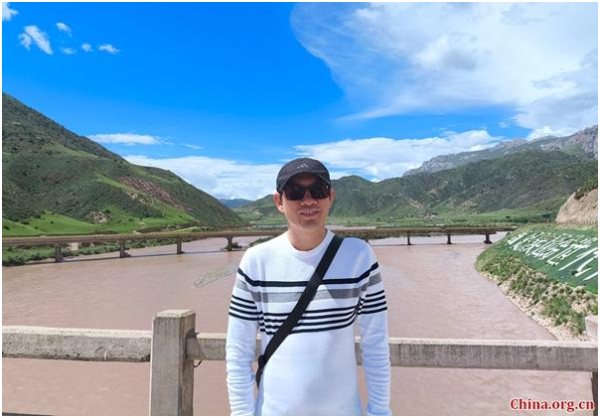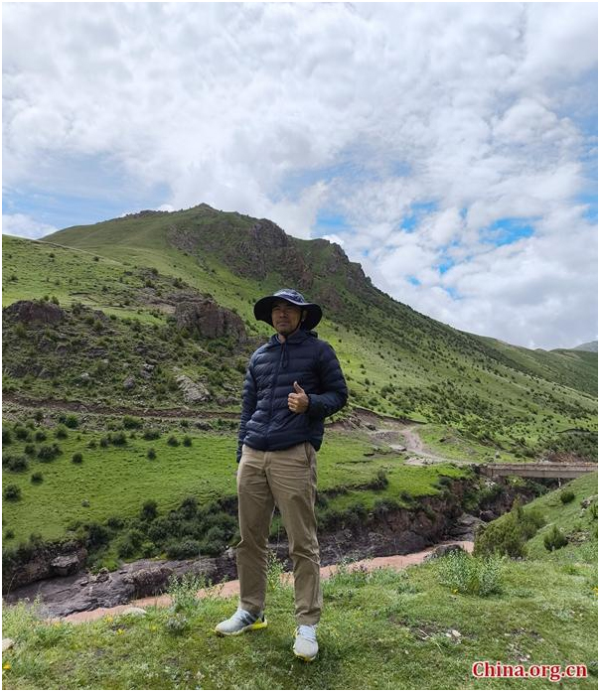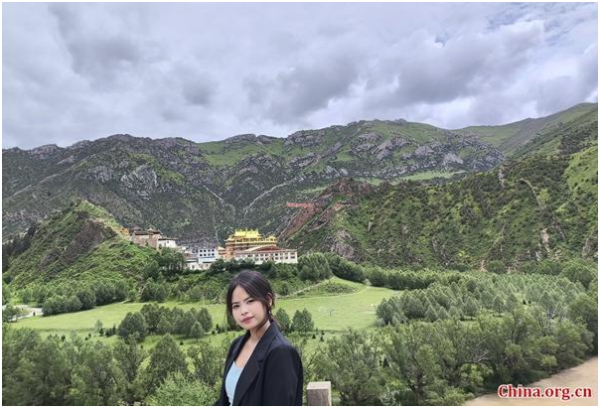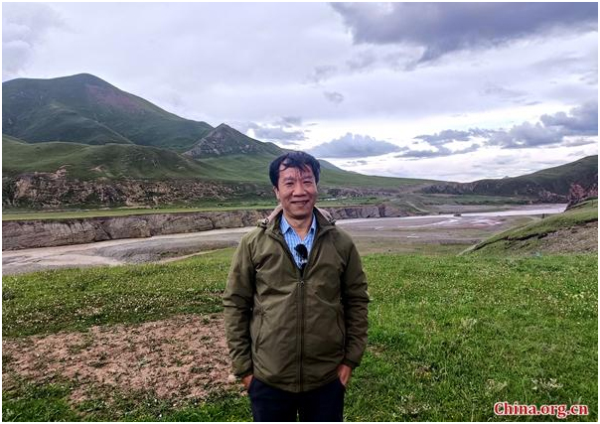KPL
During the Joint Survey of the Lancang River Source by the Six Lancang-Mekong Countries, which commenced on July 15 in northwest China's Qinghai Province, representatives from five Mekong countries shared their firsthand experiences and perspectives along the journey.
The Mekong River, known as the Lancang River in China, is a vital waterway flowing through China, Cambodia, Laos, Myanmar, Thailand and Vietnam.
By Xu Xiaoxuan
(KPL) During the Joint Survey of the Lancang River Source by the Six Lancang-Mekong Countries, which commenced on July 15 in northwest China's Qinghai Province, representatives from five Mekong countries shared their firsthand experiences and perspectives along the journey.
The Mekong River, known as the Lancang River in China, is a vital waterway flowing through China, Cambodia, Laos, Myanmar, Thailand and Vietnam.
The Lancang-Mekong River Basin (LMRB) is rich in hydropower resources, making its development crucial for water resource management and green electricity supply.

Paradis Someth poses for a photo during the joint survey in Qinghai Province, July 16, 2024. [Photo by Xu Xiaoxuan/China.org.cn]
Cambodian Paradis Someth, the principal hydrologist and technical expert of the Mekong River Commission (MRC) Secretariat, underscored the significance of China's hydropower projects in the Lancang River. He noted that while the Lancang region may not be ideal for agriculture, it holds immense potential for hydropower development.
Someth also referred to the Joint Study on the Changing Patterns of Hydrological Conditions of the Lancang-Mekong River Basin and Adaptation Strategies completed in August 2023, in which he played a key coordinating role. "We are now moving to phase 2 of the joint study, which will provide more hydrological information for the LMRB," he said, adding that the study will help address the low water levels of Cambodia's Tonle Sap Lake in recent years.
In addition, Someth was amazed by the breathtaking scenery along the journey. "I used to think it was all just rocks here, but it's green everywhere," he said.

Sivannakone Malivarn poses for a photo during the joint survey in Qinghai Province, July 17, 2024. [Photo by Xu Xiaoxuan/China.org.cn]
Sivannakone Malivarn, deputy secretary general of the Lao National Mekong Committee, also emphasized the importance of hydropower projects in the Lancang River. Initially skeptical about the impact of China's hydropower projects in the Lancang River, Malivarn feared a reduction in water volume. However, having gained more information during the joint survey, he acknowledged that these projects can regulate river runoff and prevent downstream floods. Moreover, China's assistance in building the Nam Ngum 4 hydropower station in Laos has provided substantial benefits to the country, he said.
Malivarn also praised the picturesque landscape at the river's source. "I feel lucky to visit the source area of the Lancang River. Previously, I had only seen it on TV. Seeing it in person, I appreciate the significant efforts the Chinese government has made to protect the natural environment here," he remarked.

Chaona Suppanut poses for a photo during the joint survey in Qinghai Province, July 17, 2024. [Photo by Xu Xiaoxuan/China.org.cn]
Chaona Suppanut from Thailand's Office of National Water Resources stressed the necessity of the Lancang-Mekong cooperation for effective water resources management. He highlighted the importance of hydrological information sharing, which can help downstream Mekong countries like Thailand be more informed and better prepared for future water usage.
Suppanut also emphasized the need to involve the younger generation in these efforts to ensure sustained cooperation over time. "I think the power of generations is the greatest power for change," he said.

Tin Yu Ya Swe poses for a photo during the joint survey in Qinghai province, July 16, 2024. [Photo by Xu Xiaoxuan/China.org.cn]
Tin Yu Ya Swe, a Burmese master's student in rural development at China Agricultural University, shared her excitement about visiting the Lancang River source area in the Yushu Tibetan autonomous prefecture of Qinghai for the first time.
"I want to learn about China's water management system to apply these practices in improving water management and agriculture in my home country, Myanmar, where 70% of the population relies on agriculture." She admired China's achievements in rural revitalization and believed there is much to learn from these advancements.
Furthermore, Yu Ya appreciated the natural beauty and unique culture of local Tibetans in Yushu. "Here, I saw the beautiful landscape — it's like in a movie. I also met local Tibetans and learned about their unique culture and their improved life," she said.

Nguyen Dinh Dat poses for a photo during the joint survey in Qinghai province, July 17, 2024. [Photo by Xu Xiaoxuan/China.org.cn]
Nguyen Dinh Dat from the Vietnam National Mekong Committee again highlighted the practical benefits of the hydropower stations in the LMRB. He explained that in principle, these reservoirs can store water during flood seasons and release it during dry periods.
Dat also mentioned a severe drought in 2016 caused by the El Nino phenomenon that affected several Mekong countries, including Vietnam. The Chinese government's contribution in releasing water from upstream dams significantly mitigated the drought's impact.
He also underscored the importance of water management in ensuring water supply, food safety and economic production, which will ultimately improve people's livelihoods.
KPL